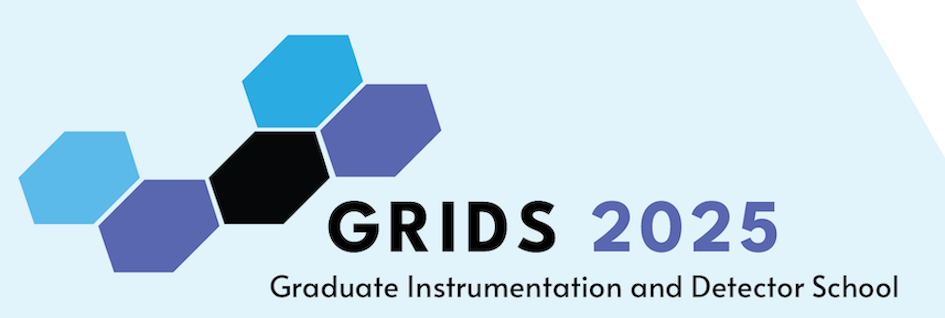M11 Experiment: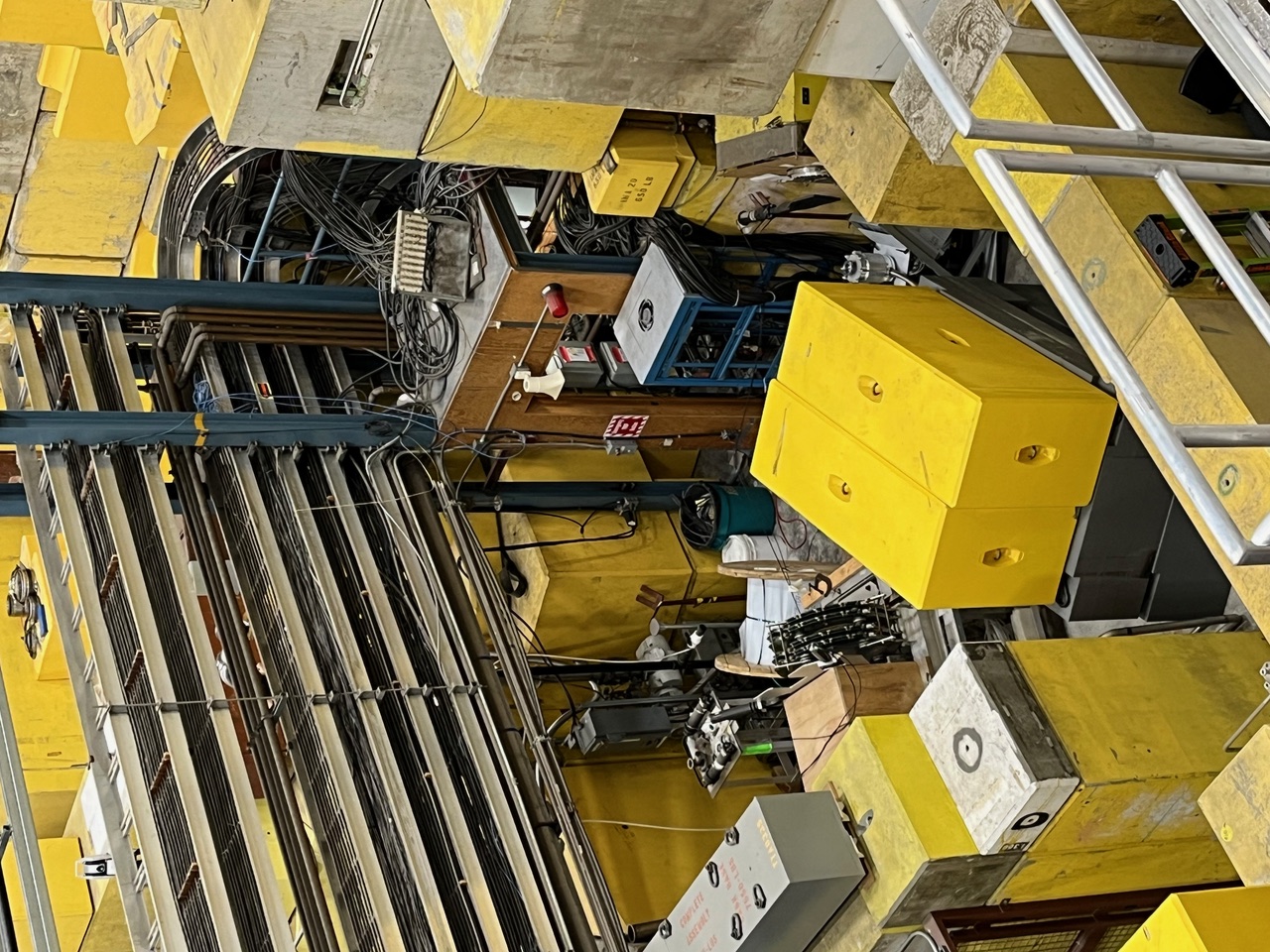
The M11 beamline at TRIUMF is a secondary beamline running parasitically on beam halo from the BL1A main beamline to produce a low yet usable intensity of mixed protons, pions, muons and positrons, suitable for testing detectors under realistic operating conditions. It provides an opportunity for GRIDS students to tune a beamline and estimate the momentum and particle composition of the beam using scintillators and a simple DAQ implemented in NIM logic and VME modules. Students can modify the logic directly and look at results on an oscilloscope or write out data to files and apply more advanced analysis techniques.
muSR / beta-NMR: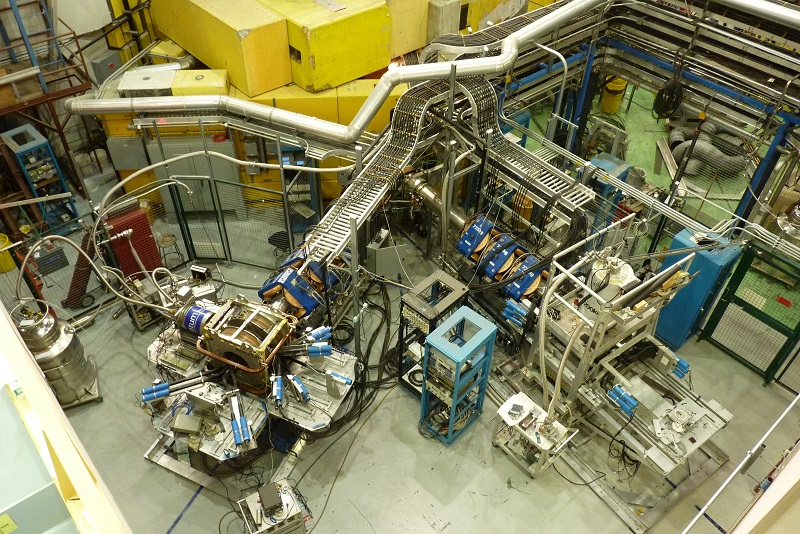
In this experiment you will be studying muonium. TRIUMF is one of four places in the world where researchers can do experiments with intense beams of muons. The M20C beamline takes surface muons that are produced at the surface of the production target T2 in Bl1A. It is steered and focused on the sample using a series of dipole and quadrupole magnets. GRIDS students will gain hands-on experience by tuning a beamline, utilize scintillators, and setup a data acquisition system (DAQ) built with NIM logic, and VME modules.
Alpha-g Proto:
The detector to be used in this experiment was designed as a prototype for the Alpha-g experiment, which is primarily intended to investigate the effects of gravity on anti-hydrogen atoms, which has been measured for the first time only recently. The experiment is a radial TPC which consists of concentric inner cathode, shaping wires, readout wires (anodes), and an outer cathode, equipped with readout strips.
In this laboratory, you will learn how to start-up and operate a radial time-projection-chamber, and perform a series of measurements that allow one to delve deep into how this type of detector works.
SPC (Spherical Proportional Counter)
Spherical Proportional Counters (SPCs) are simple particle detectors using gas as a detection medium. They are conductive spheres equipped with a central anode, set at high positive voltage. They detect the ionisation electrons from particles interacting with the gas, which drift towards the central anode, and are amplified in the high electric field. In this lab you will assemble a simple prototype SPC, operate it and observe signal from a radioactive source.
BiPo Experiment:.png)
In this lab, students will construct a circuit using standardly available NIM modules, and measure the rate of “BiPo” events in a variety of samples. The lab is deliberately open-ended. Students must first decide what circuit would work, then build and test it. The only limitations are the analogue and logic units available. Hence, students will be most prepared and likely to be successful if they have read this material in advance, and thought about circuit options.
High Purity Germanium (HPGe) Detector:
This experiment provides hands-on experience with high-resolution gamma-ray spectroscopy. Students will learn to set up, calibrate, and operate a high-purity germanium (HPGe) detector from the GRIFFIN experiment. The HPGe detector, operating at cryogenic temperatures, offers exceptional energy resolution for gamma interactions, but requires adequate calibration. Through a series of measurements and analysis, the students will gain experience in all aspects of HPGe operation, including energy calibration, and data analysis. During this experiment, the students will analyze a "mystery" source to identify the radioactive isotope present by analyzing its characteristic gamma-ray emissions.
PIN-Diode Experiment:
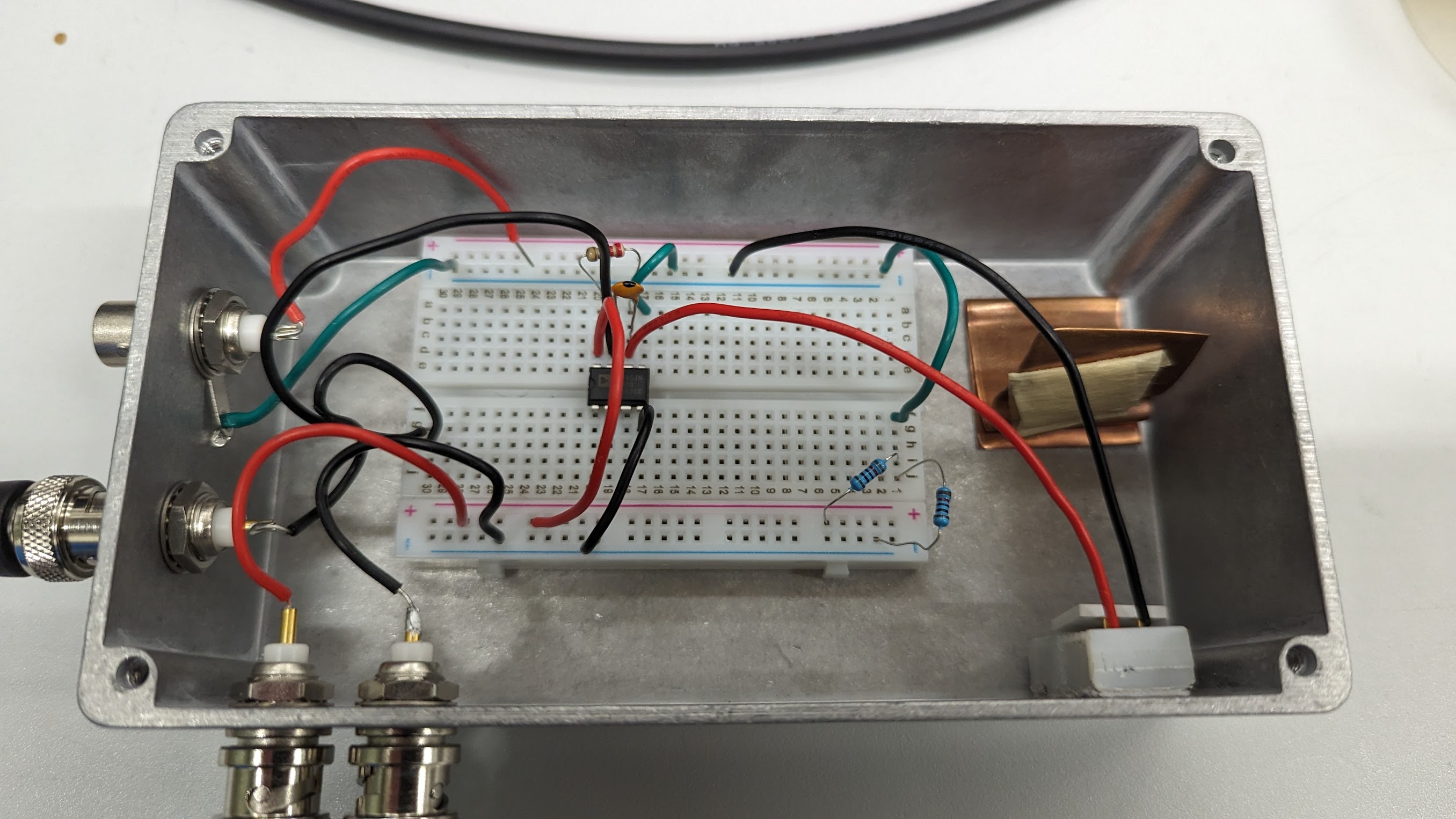
In this experiment, we are building a basic particle detector with readout electronics from scratch, with components that you can buy from any electronics shop. For particle detection we use a PIN diode. While there are cheap PIN diodes available wherever you may get your electronics supplies, they are usually protected by a casing that would prohibit our test particles to reach the detector, and they are typically rather small. So instead we acquired slightly larger and unprotected PIN diodes for this experiment. You will learn how a PIN diode (or any semiconductor-based detector for that matter) is used to detect particles and how the primary signal can be amplified to an easily measurable magnitude. Time permitting, we will try to optimize the setup to reduce the impact of electronic noise and produce the best energy resolution possible with the given components.
Silicon PhotoMultipliers (SiPM) Characterization: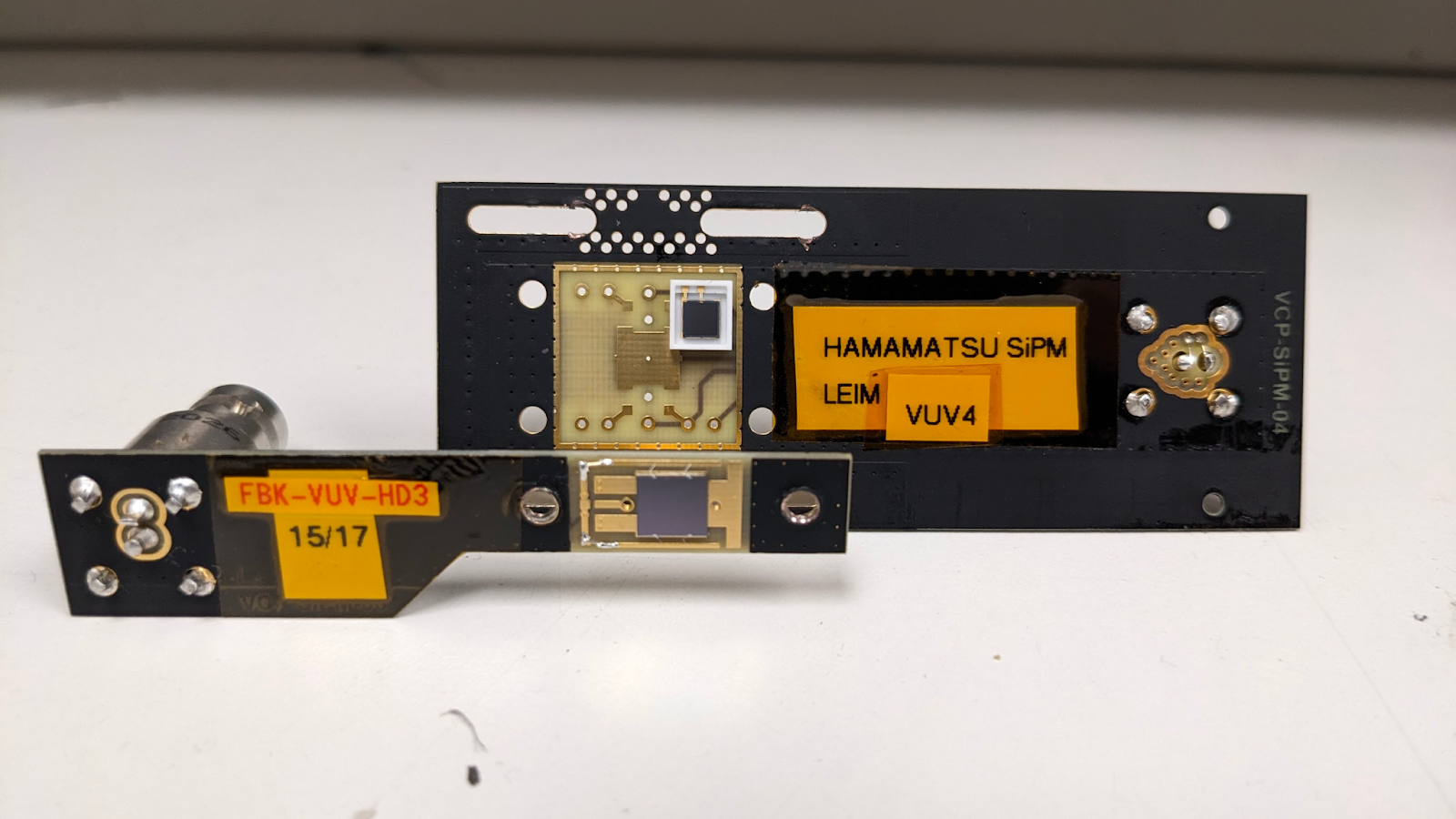
Silicon Photo-Multipliers (SiPMs) are solid state devices designed to measure single instances of light very precisely. In contrast to the widely used photomultiplier tubes (PMTs), SiPMs are low-voltage powered, optimal for operation at cryogenic temperatures, and have low radioactivity levels, and high gain stability over time in operatinoal conditions.
In this laboratory, you will gain experience in understanding the intrinsic properties of SiPMs and how to set-up and run them in different operational modes.
Tactic-TPC Detector: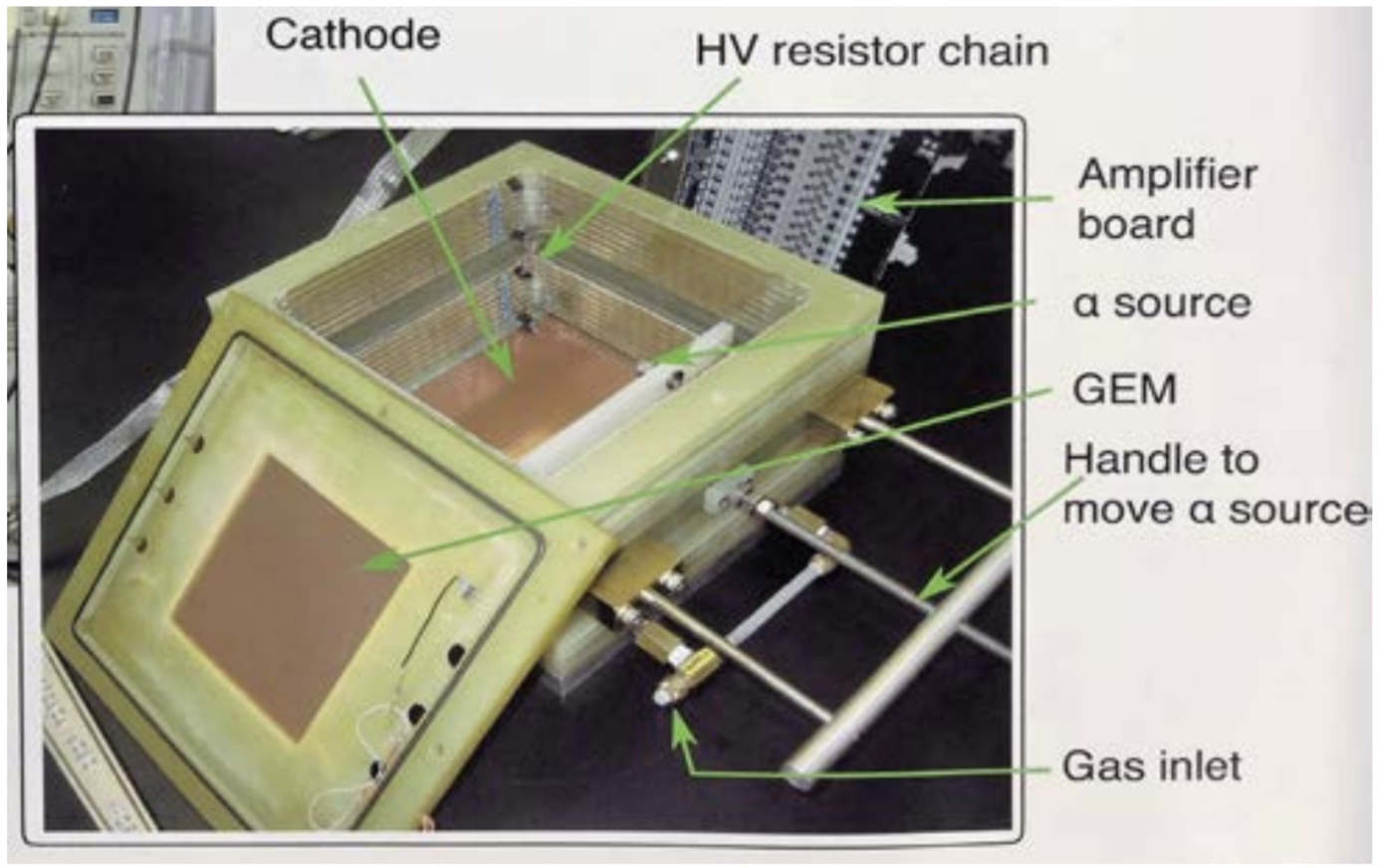
This experiments consists of a drift gas (nominally He/CO2 (70/30)), with provision to insert an Americium-241 alpha-emitting source. This isotope emits 5.486 MeV (85.2%) and 5.443 MeV (12.8%) alphas (helium nuclei) which are the source of ionization, and which are low enough in energy to stop in the chamber. The source can be open, so that alpha particles are emitted over a wide area, or collimated to create a narrower beam. A cathode plane on the bottom of the detector is kept at a large negative voltage (around -1500 V) with respect to the grounded lower surface of the GEM, creating a vertical electric field. The students will setup, calibrate and operate the drift chamber, to further learn how to operate gas detectors and GEM readout techniques.
Stopping Muon Detector (SMD):
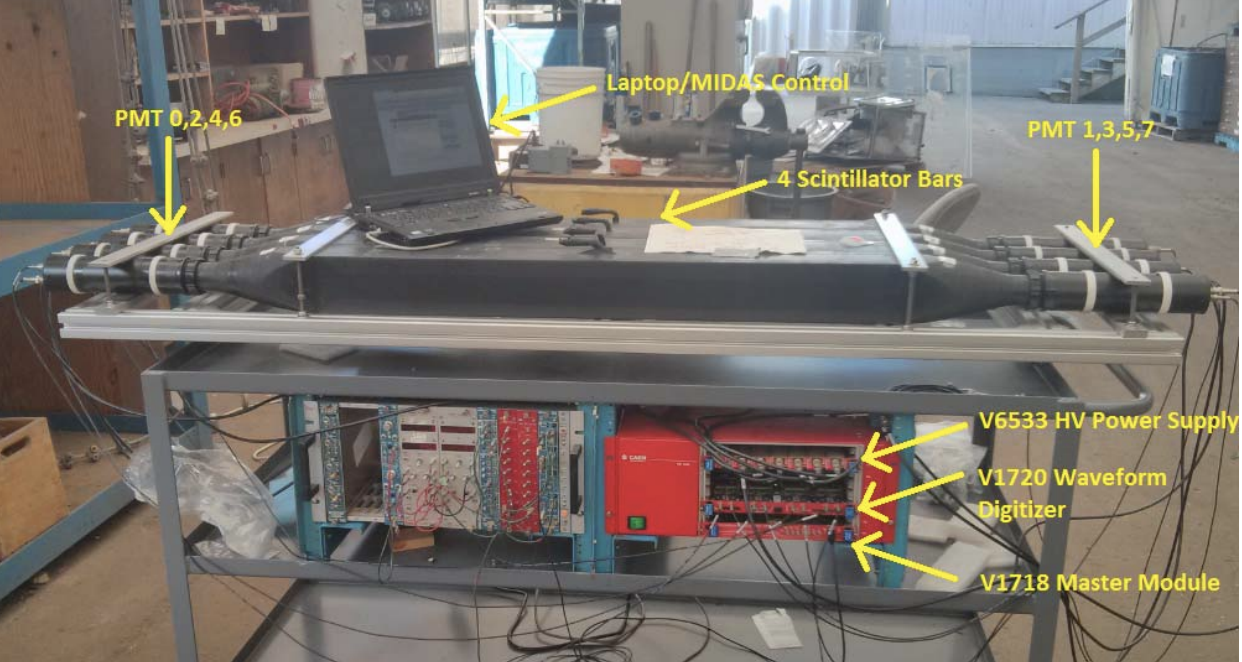
This setup was originally designed to study the effect of low energy muons which can
cause single event upsets in electronic devices such as SRAM memories. The particular muons of interest are below 10 MeV (with a range in silicon of a few mm) and may cause upsets when the muon deposits most of its energy.
The Stopping Muon Detector (SMD) consists of four 10cm x 10cm x 100cm plastic
scintillators (Bicron-400). Any scintillation light singal generated by charged particles passing through will be collected by two PMTs placed at the cap-end of each bar. The experiment can be configured in various ways to make measurements which relate to the scintillator and PMT properties and performance such as time and energy resolutions as well as properties of muons such as the decay energy spectrum and lifetime.
